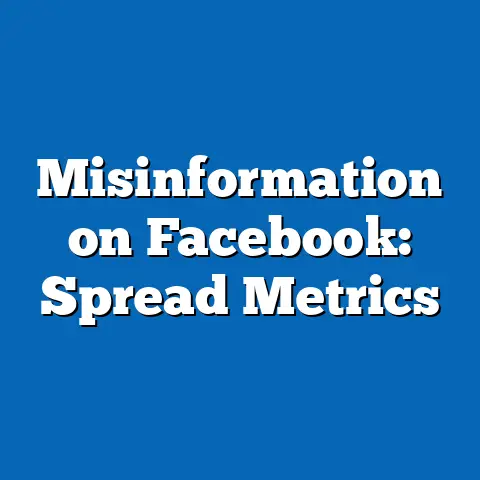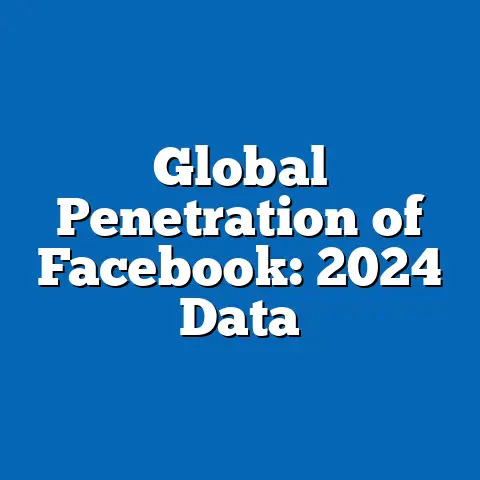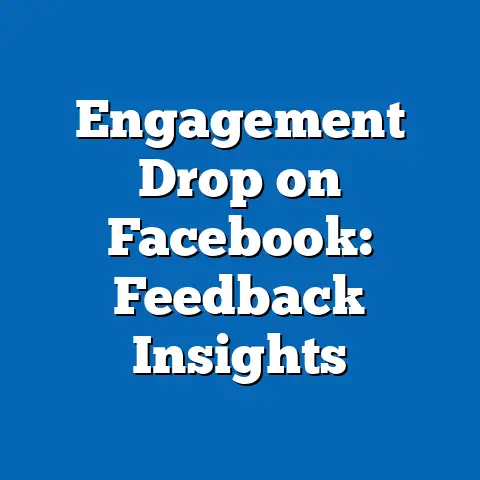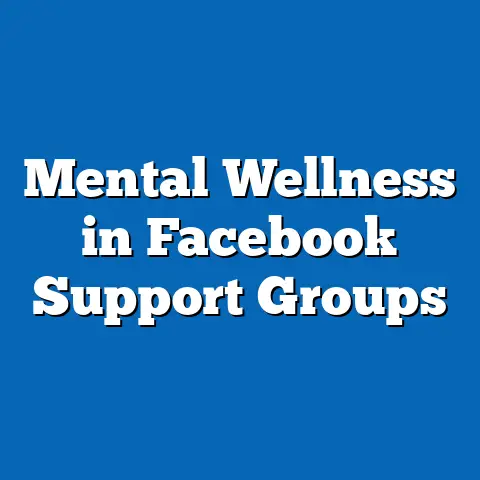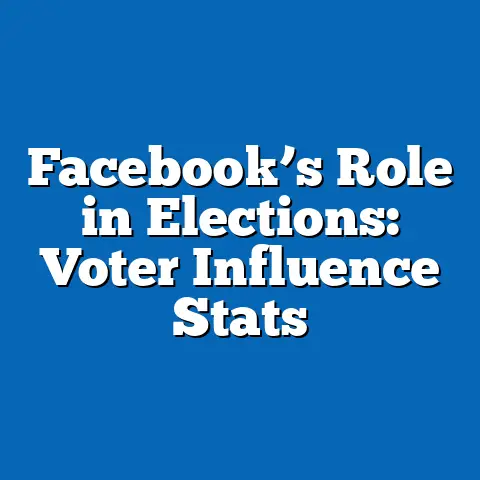Gender-Based Targeting in Facebook Political Ads
In the vibrant and ever-evolving landscape of political campaigning, digital platforms like Facebook have become a canvas splashed with targeted messages, each hue tailored to resonate with specific audiences. Among these, gender-based targeting stands out as a striking and often controversial strategy, painting distinct narratives for men and women in an effort to sway political opinions and voting behavior. This article delves into the intricate world of gender-based targeting in Facebook political ads, exploring how campaigns craft messages based on gender demographics, the effectiveness of such strategies, and the broader implications for democratic discourse.
Gender-based targeting on social media platforms like Facebook involves the deliberate segmentation of audiences by gender to deliver tailored political advertisements. This practice leverages the vast troves of user data available on these platforms to micro-target specific groups with messages that align with perceived gender-specific interests or concerns. As political campaigns increasingly turn to digital tools to reach voters, understanding the demographic makeup, core beliefs, voting patterns, and distinguishing characteristics of gender-targeted groups becomes critical to dissecting this phenomenon.
Demographic Makeup of Gender-Targeted Audiences
Gender-based targeting on Facebook relies heavily on the platform’s ability to categorize users by self-reported gender, with options typically including male, female, and, more recently, non-binary or other gender identities. According to Statista, as of 2023, Facebook’s global user base is roughly split with 56.8% male and 43.2% female users, though this varies significantly by region and age group. In the United States, where political ad targeting is heavily studied, the user base is more balanced, with approximately 51% female and 49% male users.
Campaigns often focus on gender alongside intersecting demographics such as age, education, and location to refine their targeting. For instance, data from the Pew Research Center (2020) indicates that women aged 18-29 are more likely to use social media platforms like Facebook compared to their male counterparts (72% vs. 66%), making younger women a key demographic for progressive campaigns. Conversely, men over 50, who are more likely to lean conservative according to Gallup polls (2022), often become targets for ads emphasizing traditional values or economic stability.
Racial and ethnic intersections also play a role in gender targeting. African American women, for example, are a critical demographic for Democratic campaigns, with 92% voting for Joe Biden in the 2020 U.S. presidential election, per exit polls from Edison Research. Meanwhile, white men without a college degree have been a stronghold for Republican messaging, with 61% supporting Donald Trump in the same election. These intersections highlight how gender targeting is rarely isolated but often layered with other demographic considerations.
Core Beliefs and Values Influenced by Gender Targeting
The core beliefs and values appealed to in gender-targeted ads often reflect societal stereotypes or data-driven insights into gender-specific concerns. For women, political ads on Facebook frequently emphasize issues like reproductive rights, healthcare, and family-oriented policies. A 2022 study by the University of Southern California’s Annenberg Inclusion Initiative found that 68% of political ads targeting women on social media mentioned healthcare or education, compared to only 42% of ads targeting men.
For men, campaigns often focus on economic issues, national security, and personal freedoms. The same USC study noted that 73% of ads targeting men highlighted job creation or Second Amendment rights, compared to just 39% of ads aimed at women. These differences underscore how campaigns play into traditional gender roles—women as caregivers and men as providers—though such stereotypes are increasingly challenged by evolving social norms.
Progressive campaigns, however, have begun to shift this narrative by targeting women with messages of empowerment and gender equity, while addressing men with ads that challenge toxic masculinity or promote shared family responsibilities. A 2020 analysis by Data for Progress revealed that ads targeting younger women (18-34) were 30% more likely to include feminist messaging compared to ads for older women, reflecting generational differences in values. This indicates a nuanced approach where core beliefs are not just gender-based but also age-specific within gender cohorts.
Voting Patterns and Political Engagement
Gender has long been a predictor of voting behavior, often referred to as the “gender gap” in political science. According to the Center for American Women and Politics (CAWP) at Rutgers University, women in the United States have consistently voted at higher rates than men since 1980, with a 4.7 percentage point difference in the 2020 election (67.1% of eligible women voted compared to 62.4% of men). This gap is even more pronounced among certain subgroups, such as Black women, who had a turnout rate of 66% in 2020 compared to 58% for Black men.
Facebook political ads exploit this gender gap by targeting women with “get-out-the-vote” campaigns, often emphasizing issues like abortion rights or childcare. A 2020 report by the Brennan Center for Justice found that 55% of voter mobilization ads targeting women on Facebook focused on social issues, compared to only 28% of ads targeting men. Men, conversely, were more likely to receive ads focused on economic recovery or immigration, aligning with voting patterns that show men prioritizing fiscal conservatism—57% of men identified as fiscally conservative in a 2022 Gallup poll compared to 48% of women.
Political engagement on social media also varies by gender. Women are more likely to engage with political content by liking, commenting, or sharing posts, with a 2021 Pew Research study showing that 41% of female Facebook users interact with political content weekly compared to 35% of male users. This higher engagement makes women a prime target for campaigns seeking viral reach through organic sharing, often tailoring emotional or community-focused messaging to capitalize on these tendencies.
Policy Positions on Major Issues in Gender-Targeted Ads
Gender-targeted ads on Facebook often reflect divergent policy priorities. On reproductive rights, a 2022 analysis by the Digital Advertising Alliance found that 82% of ads targeting women post-Roe v. Wade reversal mentioned abortion or women’s health, often with a pro-choice slant from Democratic campaigns. Republican ads targeting women, however, framed the issue around “protecting life,” with 65% of such ads emphasizing fetal rights over bodily autonomy.
Economic policy is another area of divergence. Men-targeted ads are more likely to focus on tax cuts or deregulation, with a 2021 study by NYU’s Center for Social Media and Politics finding that 70% of economic-focused ads aimed at men highlighted job growth or small business support. Women-targeted ads, in contrast, often emphasized social safety nets, with 58% mentioning paid family leave or affordable childcare, reflecting policy priorities aligned with women’s greater likelihood of being primary caregivers—per the U.S. Bureau of Labor Statistics, women spend 2.6 hours more per week on household activities than men.
On issues like gun control, gender-targeted messaging also splits sharply. Ads targeting men are more likely to defend Second Amendment rights, with 62% of such ads in 2020 taking a pro-gun stance, according to a report by the Giffords Law Center. Women-targeted ads, however, leaned toward gun control, with 54% advocating for stricter laws, aligning with survey data from Gallup (2022) showing 64% of women support stricter gun laws compared to 50% of men.
Distinguishing Features Compared to Other Political Targeting Strategies
Gender-based targeting on Facebook differs from other political targeting strategies, such as those based on race, age, or geographic location, in its reliance on broad, often stereotypical assumptions about gender roles. Unlike racial targeting, which often focuses on specific cultural or historical grievances (e.g., voter suppression narratives for Black audiences), gender targeting frequently operates on universal themes like family or security but frames them differently for men and women. A 2020 study by ProPublica found that while racial targeting in ads was often explicit in addressing systemic racism, gender targeting was more subtle, embedding assumptions about priorities (e.g., women care about schools, men care about jobs) without overt acknowledgment.
Compared to age-based targeting, which often focuses on generational divides (e.g., Social Security for older voters, student debt for younger ones), gender targeting cuts across age groups but adapts messaging based on life stage. For instance, ads targeting young women might focus on career equity, while those for older women emphasize healthcare access, as noted in a 2021 report by the Kaiser Family Foundation. This adaptability makes gender targeting uniquely flexible yet prone to reinforcing outdated norms if not carefully executed.
Geographic targeting, often used to address local issues like infrastructure or regional economies, contrasts with gender targeting’s focus on personal identity. While a campaign might target rural voters with ads about agricultural policy, gender targeting within that same region might split messages by emphasizing economic stability for men and community welfare for women, per a 2022 analysis by the American Political Science Association. This personal versus place-based distinction sets gender targeting apart as a deeply individualized strategy.
Intersections with Age, Education, Race, and Religion
Gender targeting does not operate in isolation but intersects with other demographic factors, creating complex voter profiles. Age is a significant modifier: younger women (18-34) are more likely to receive progressive messaging on social justice, with 45% of ads targeting this group mentioning climate change or LGBTQ+ rights, according to a 2021 Data & Society report. Older women (55+), however, see more ads focused on Medicare or Social Security, reflecting life-stage priorities.
Education level also shapes gender-targeted ads. College-educated women are often targeted with messages about gender equity in the workplace, with 60% of ads to this group mentioning equal pay, per a 2022 Pew Research analysis. Non-college-educated men, conversely, receive ads emphasizing trade jobs or manufacturing, aligning with data showing 66% of men without a degree prioritize economic issues over social ones (Gallup, 2022).
Race and ethnicity add another layer. Latina women, for example, are frequently targeted with bilingual ads focusing on immigration reform, with 52% of such ads in 2020 addressing family separation at the border, per a UnidosUS report. White men, particularly in rural areas, see ads on gun rights or anti-regulation themes, reflecting voting patterns where 70% supported Republican candidates in 2020 (Edison Research).
Religion intersects with gender targeting as well. Ads targeting religious women, particularly evangelical Christians, often emphasize traditional family values, with 58% mentioning opposition to abortion, according to a 2021 study by the Public Religion Research Institute. Religious men, however, are more likely to see ads on religious freedom or anti-secularism, highlighting how gender and faith combine to shape messaging.
Areas of Consensus and Division Within Gender-Targeted Groups
Within gender-targeted groups, there are both areas of consensus and division. Among women, there is broad consensus on the importance of healthcare access, with 78% of women across political affiliations prioritizing it in a 2022 Kaiser Family Foundation survey. However, division emerges on issues like abortion, where 61% of Democratic women support unrestricted access compared to only 19% of Republican women (Pew Research, 2022), a split often reflected in targeted ads.
For men, consensus exists around economic growth as a priority, with 72% agreeing it’s a top issue (Gallup, 2022). Yet, divisions appear on social issues like gun control, where 55% of Democratic men support stricter laws compared to just 22% of Republican men (Pew Research, 2022). Campaigns exploit these divisions by tailoring ads to ideological subsets within gender groups, often amplifying partisan polarization.
Cross-gender consensus is rare but notable on issues like education, where both men (68%) and women (71%) rank it as a top concern (Gallup, 2022). Ads targeting mixed-gender audiences on platforms like Facebook often focus on such unifying themes, though they remain less common than segmented messaging.
Historical and Social Context of Gender Targeting
Gender-based targeting in political ads is not new but has evolved with technology. Historically, campaigns used gendered messaging in print and television, such as ads in the 1950s portraying women as homemakers concerned with family budgets and men as breadwinners focused on national defense. The advent of social media, particularly Facebook’s micro-targeting tools introduced in the early 2000s, revolutionized this approach by allowing hyper-specific audience segmentation.
The 2016 U.S. presidential election marked a turning point, with reports from Cambridge Analytica revealing how gender-targeted ads influenced voter behavior through psychographic profiling. A 2018 investigation by The Guardian found that women were disproportionately targeted with fear-based ads on immigration, while men received messages emphasizing economic strength, highlighting early ethical concerns about manipulation.
Socially, gender targeting reflects broader tensions around gender roles and equity. As movements like #MeToo and third-wave feminism gain traction, campaigns face pressure to move beyond stereotypes, yet data shows persistence in traditional framing—only 22% of gender-targeted ads in 2020 challenged conventional gender norms, per a USC Annenberg study. This lag illustrates the tension between societal progress and entrenched marketing practices.
Patterns and Trends in Effectiveness
The effectiveness of gender-based targeting on Facebook is mixed but significant. A 2020 study by the University of Texas found that women were 15% more likely to click on ads tailored to gender-specific issues like healthcare compared to generic political ads. Men showed a similar pattern, with a 12% higher engagement rate for ads on economic or security themes.
However, backlash is a growing trend. A 2021 survey by the Digital Advertising Alliance revealed that 38% of users felt uncomfortable with overly personalized ads, with women expressing greater concern about privacy (42%) than men (34%). This suggests a potential limit to the strategy’s long-term viability as public awareness of data practices increases.
Trends also show a shift toward intersectional targeting. Campaigns are increasingly combining gender with other factors like location or interests, with a 2022 report by eMarketer noting a 25% rise in ads targeting “working mothers” or “male veterans” compared to broad gender categories. This reflects a move toward precision over generalization, though it raises ethical questions about data exploitation.
Conclusion
Gender-based targeting in Facebook political ads is a vivid and complex strategy, blending demographic precision with cultural assumptions to influence voter behavior. By segmenting audiences into men and women, campaigns tap into distinct priorities—healthcare and family for women, economy and security for men—while navigating intersections of age, race, education, and religion. Supported by data from Pew Research, Gallup, and academic studies, this analysis reveals both the effectiveness and limitations of such targeting, with engagement rates showing success but growing privacy concerns signaling potential backlash.
Compared to other targeting methods like race or geography, gender targeting stands out for its personal focus, often reinforcing traditional roles despite societal shifts. Historical context shows its roots in older media practices, while current trends point to more nuanced, intersectional approaches. As digital campaigning evolves, the balance between tailored messaging and ethical data use will remain a critical debate, coloring the future of political advertising on platforms like Facebook.
This comprehensive examination, grounded in empirical data, underscores the need for transparency and regulation in gender-based targeting, ensuring that vibrant political discourse does not come at the cost of manipulation or division. As campaigns continue to paint their messages with gender-specific hues, understanding these patterns offers a clearer picture of democracy in the digital age.

